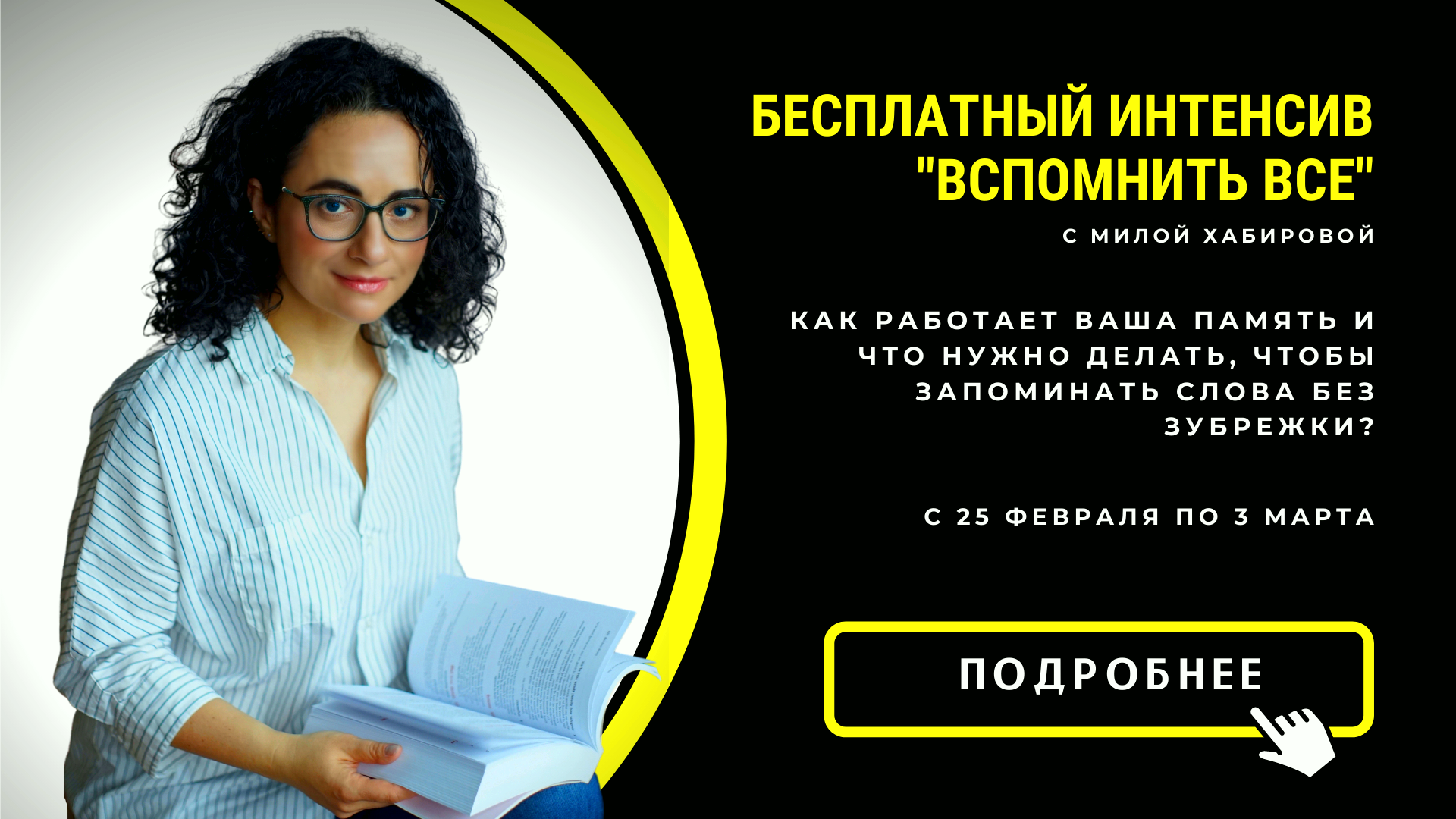DOWNLOAD FREE WORKSHEETS IN PDF
GAPS FILL: COLLOCATIONS QUESTIONS
MATCHING VERB + PREPOSITION 1
MATCHING VERB + PREPOSITION 2
MATCHING VERB + PREPOSITION 3
MATCHING VERB + PREPOSITION 4
MATCHING VERB + PREPOSITION 5
MATCHING VERB + PREPOSITION 6
GAPS FILL WORD PATTERNS 1
GAPS FILL WORD PATTERNS 2
GAPS FILL WORD PATTERNS 3
GAPS FILL WORD PATTERNS 4
WORD PATTERNS CATEGORIES
MULTIPLE CHOICE ADJECTIVE + PREPOSITION
MULTIPLE CHOICE ADJECTIVE + PREPOSITION 2
MULTIPLE CHOICE ADJECTIVE + PREPOSITION 3
B2 MATCHING VERB + PREPOSITION 1
B2 MATCHING VERB + PREPOSITION 2
B2 MATCHING VERB + PREPOSITION 3
B2 MATCHING VERB + PREPOSITION 4
B2 MATCHING VERB + PREPOSITION 5
B2 MATCHING VERB + PREPOSITION 6
WORD PATTERNS AND COLLOCATIONS
AS AND LIKE EXERCISES
FOR AND DURING EXERCISES
MAKE OR DO EXERCISES
WEAR VERSUS CARRY
ARRIVE GET OR REACH
MANAGE ACHIEVE OR SUCCEED
PLAY GO OR DO
WATCH OR SEE
BRING OR TAKE
COME OR GO
LEND OR BORROW
PASS SPEND OR TAKE
PICK OR CHOOSE
TRY INTEND OR TASTE
DO, MAKE, HAVE OR TAKE
ONE WORD EDUCATION GAPS FILL
MISS OR LOSE
PREPOSITIONS GAPS FILL QUESTIONS
(NEW) STAY MATCHING
(NEW) COLLOCATIONS CATCH, TAKE, MAKE, TELL, LOSE
(NEW) COLLOCATIONS BEAT, DEFEAT, ATTRACT, COMPETE, INVOLVE
(NEW) PREPOSITIONAL PHRASES
(NEW) PREPOSITIONAL PHRASES AT, BY, FOR, IN, ON
(NEW) ADJECTIVE AND PREPOSITION OF, TO, AT, IN
(NEW) VOCABULARY: ENVIRONMENT GAPS FILL
FOR PHRASAL VERB ACTIVITIES IN PDF CLICK (HERE) AND FOR GRAMMAR IN PDF CLICK (HERE)
Word patterns and the understanding of vocabulary and prepositions are fundamental in achieving accuracy in English. Take a look HERE for extra advice on how to improve your vocabulary. Feel free to share the activities and students and teachers can use the PDFS in their classes and for the reinforcement of language.
The best way to learn word patterns (meaning verbs + prepositions, adjectives + prepositions or nouns + prepositions) is to learn them as a short phrase instead of learning them on their own, for example:
depend on = I normally pass exams easily, but it depends on the day
consist of = What does the course consist of exactly?
You should use word patterns in various different ways such as speaking, reading, writing and listening. It is very important to use them in contexts that you can remember. You should use MNEMONICS to help you recall them or even associate them with an image.
Follow our VOCABULARY BOOST SERIES (HERE) in the vocabulary section of activities to improve your collocations and word patterns and also, this great way (HERE) to improve your vocabulary.
Here are some free PDF exercises for you to practice at home.
Follow our vocabulary boost series (HERE) to study new vocabulary and collocations. Remember, practice makes perfect!
Sentence patterns are something that all English speakers struggle with, here are some patterns to help you form sentences with ease.
Let’s first take a look at the patterns, and then we’ll make some sentences.
The Patterns/ Word Patterns Definition
1. Pattern
The verb to be as the main verb in the sentence.
- is
- are
- was
- were
- has been/have been
- had been
2. Pattern
Linking verb + a noun or Linking verb + an adjective (in this case the adjective functions as the subject of the sentence)
Examples:
- smell
- taste
- look
- feel
- seem
- become
- appear
- grow
3. Pattern
An action verb is used as the main verb in the sentence. The action verb can be transitive, where is takes an object in a direction, or non- transitive, where it does not takes an object in a direction.
- see
- jump
- embrace
- write
- imagine
- buy
- plummet
- think
Skype English Lesson with a native AMERICAN or BRITISH teacher ››
Basic Parts of Speech
We’re going to break down some example sentences that use these three patterns. Here are some basic parts of speech that you will need to know to follow along.
Parts of a sentence that matter.
The subject of the sentence
This is who or what the sentence is about. You can find it by simply asking the question who did something or what are we talking about.
Verb to be
This verb uses the forms is, am, and are in the present tense, as well as was and were in the past tense, and will be in the future tense. Been and being are it’s past participle forms.
Linking Verbs
Linking verbs link the subject of the sentence to the action of the sentence. For example My cat is fat. My cat is the subject of the sentence and the action (or what I’m saying about him) is that he’s fat. Those two words are linked together by the word is.
Another example is My cat appears fat. My cat is still the subject, and I’m still saying he’s fat. I link those two words together with the word appears.
Here’s an extra hint to tell if a verb is a linking verb. Any linking verb can be replaced with a form of the verb to be.
A linking verb is any form of the verb to be, plus verbs that refer to the five senses. Here are some linking verbs that are often used, taste, become, appear, grow, feel, look, stay, turn, remain, seem,smell, and sound.
Action verb
These are things that you do. If something is an action verb you can physically do it; walk, run, jump, give, hold. You can also add ing to action verbs.
Time or place
This just tells when or where something happened. For example this includes the words, here, there, this morning, tomorrow, at home, at school, and last year.
Adjective
This describes a noun. For example blue car, pink pig, pretty girl. These are all describing words.
If this feels like a lot of grammar, don’t be overwhelmed. The most important things to remember are…. (please notice the abbreviations that we will use when building sentences)
Subject=S– this is who or what the sentence is about.
The verb to be = Vbe (this is probably the first verb you learned)
Linking Verb= LV – these include the verb to be and the five sense (taste, smell, look, feel, touch)
Action Verbs=AV– these are something you can physically do.
Time or Place=TP– this is when and where something happens.
Adjectives= A– these are words that describe people, objects, and places (nouns)
Noun= N– is a person, place or thing.
Check your Grammar ››
Forming Sentences
Ok, let’s make some sentences!
- Let’s start simple.
Subject + the Verb to be+ an action verb
- I am walking.
S+ Vbe+ AV
- She was running.
S+ Vbe+ AV
- We will be playing.
S+ Vbe+ AV
Notice all of the action verbs end in “ing”, that is always the case with the verb to be.
Now let’s change things up a bit. Instead of using a basic pronoun as the subject, let’s use another noun.
- The dog is walking.
S+ Vbe+ AV
- Mary was running.
S+ Vbe+ AV
- The teams will be playing.
S+ Vbe+ AV
Now let’s add a place.
Subject + the Verb to be+ an action verb+ a place
- The dog is walking in the park.
S+ Vbe+ AV+ TP
- Mary was running away.
S+ Vbe+ AV+ TP
- The teams will be playing here.
S+ Vbe+ AV+ TP
Skype English Lesson with a native AMERICAN or BRITISH teacher ››
Now let’s add time. Time phrases usually go at the beginning or the end of a sentence. In a compound sentence they can go at the beginning or end of either clause of the sentence.
- The dog is walking in the park right now.
S+ Vbe+ AV+ TP+ TP
- Yesterday, Mary was running away.
TP+ S+ Vbe+ AV+ TP
- The teams will be playing here tomorrow.
S+ Vbe+ AV+ TP+ TP
Now let’s add an adjective to our sentences. These will go before the noun, which could be the subject.
- The lazy dog is walking in the park right now.
A+ S+ Vbe+ AV+ TP+ TP
- The dog is walking in the biggest park right now.
S+ Vbe+ AV+ A+ TP+ TP
- Yesterday Mary was running away quickly.
S+ Vbe+ AV+ TP+ TP+ A
- The best teams will be playing here tomorrow.
A+ S+ Vbe+ AV+ TP+ TP
Here are some other ways the you can easily organize sentence.
- The coffee cup is over there.
S + Vbe +TP
- The chairs will be here tomorrow
S + Vbe +TP+ TP
- The flowers couldn’t be more beautiful.
S+ Vbe+ A
- The kids are at the game.
S+ Vbe + TP+ Noun
- The computer looks broken.
S+ LV+ A
- The kitten became a cat.
S+ LV= Noun
- She runs downtown.
S+ AV + Noun
- Jack walked home quickly.
S+ AV+ Noun + A
- Sam showed he is a loyal friend.
S+ AV+ Noun+Vbe+ A+ N
Check your Grammar ››
Иностранные слова лучше всего учить в контексте, особенно если вы только начали осваивать язык. Речевые паттерны помогут быстрее строить предложения и легче запоминать грамматические структуры. В этой статье разберем, что такое речевые паттерны, какие они бывают и где их искать.
Что такое речевые паттерны?
Речевые паттерны — это предложения, которые показывают какую-то часто употребляемую структуру в языке.
Рассмотрим на примере. Использование модального глагола can в просьбах:
- Can you bring me?
- Can you say it again?
- Can I have it?
Структуры «can you», «can I» и глагол без частицы «to» после нее — это и есть речевой паттерн. Его легко запомнить и хранить в памяти единым блоком, а не составлять предложения из отдельных слов.
Паттерны vs отдельные слова
Паттерны предпочтительнее слов потому, что строить высказывание из готовых блоков гораздо проще, чем собирать его из отдельных слов, вспоминать, каким образом они правильно соединяются между собой. Эти два разных подхода к построению предложений хорошо иллюстрирует аналогия с постройкой дома. Если строить дом из отдельных кирпичиков, это займёт больше времени, чем если возводить его из готовых панелей. Первый подход — это когда мы строим предложение из отдельных слов, которые как бисер рассыпаны где-то в нашей памяти. Второй подход — когда у нас уже есть готовые блоки слов, которые хранятся как монолит.
Естественно, говорить, используя речевые паттерны, получится гораздо быстрее. Скорее всего паттерны не позволят вам высказываться очень красиво, витиевато и необычно, но они точно помогут быстро донести мысль. На начальном этапе обучения способность говорить быстрее более важна, чем умение говорить красиво и абсолютно правильно. Быстрая речь дает вам ощущение прогресса и успеха, таким образом, вы чувствуете себя увереннее в языке, и вам легче продолжать занятия. Именно поэтому паттерны очень полезны для новичков.
Секрет успеха
- Учите готовую фразу, а не отдельные слова. Запоминайте стандартные фразы, на основе которых вы сможете создавать подобные предложения.
- Не старайтесь сразу постичь грамматику. Вначале достаточно понимать смысл речевого паттерна, знать, в каких ситуациях и как он употребляется. Учить грамматику без отработки и активного использования изученных грамматических структур очень сложно. Отложите штудирование грамматического справочника на то время, когда вы столкнетесь в речи с новой структурой.
- Составьте собственный список паттернов. Начните с настоящего времени, конструкций с модальными глаголами «могу», «должен», «нужно», фраз с глаголом «хочу». Затем обратитесь к паттернам образования прошедшего времени (самого простого, если в языке их несколько) и будущего времени (также самого простого).
Библиотека паттернов
Где же искать готовые речевые паттерны? Вот несколько полезных источников:
- «Минифраз» Гуннемарка. Шведский полиглот Эрих Гуннемарк, который ввел понятие «минилекс», также составил перечень основных речевых паттернов — «минифраз». Из этого списка можно почерпнуть много частотных грамматических конструкций. Минифраз есть в русском издании (русский/английский/шведский), можно ориентироваться на него и при изучении других языков.
- Грамматический справочник «Practical English Usage», автор Michael Swan. Книга в большей степени предназначена для преподавателей английского языка, но тем не менее на нее можно ориентироваться, так как она построена по принципу наиболее частотных конструкций.
- Учебник грамматики «English Grammar in Use», автор Raymond Murphy. Широко известный среди русскоговорящих студентов, учебник впервые был выпущен в 1985 году и выдержал 4 издания. Его тоже можно использовать в качестве источника речевых паттернов, если не обращать внимания на правила, а посмотреть, как названы главы в книге. По сути названия глав — список часто употребляемых речевых шаблонов.
Речевые паттерны для продвинутого уровня
Речевые паттерны могут быть не такими простыми, как в приведенных выше примерах с глаголом «can». Они могут отображать сослагательное наклонение, выражать нереальные желания (условно-временные предложения 3 типа в английском языке). Эти речевые шаблоны особенно важны на начальной стадии обучения, но и более опытные студенты могут составить свой перечень паттернов для решения собственных трудностей в языке.
Бывает так, что никак не удается загрузить в свою память какие-то грамматические структуры или даже просто слова.
Один студент постоянно путался в словах «little / a little», «few / a few».
Заучивание следующих предложений решило его проблему:
- A few people arrived late.
- Only few people said they would help.
- There is a little ice-cream left
- There is little traffic in the morning.
Попробуйте выучить предложения, где используются трудные для вас слова. Так вы получите готовый пример употребления этого явления в языке и сможете сказать правильно.
 |
Мила Хабирова руководитель проекта English is My Cup of Tea, переводчик-синхронист, преподаватель английского языка с 18-летним опытом, сертифицированный коуч, интернет-тренер, автор тренингов и курсов. |
You want to improve your English speaking but don’t know where to start? You know a lot of English words but have a hard time making sentences in English?
You know why?
The reason is you don’t learn common English phrases and sentence patterns, do you? These phrases and patterns are said as basic units for you to make much more correct sentences in English.
Below are 100 common English phrases and sentence patterns that are much used in daily life. Each common English phrase includes real audios and scripts which help you learn sentence structures better, and make sentences in English much more easily.
If you master just one common English phrase or sentence pattern, you can make hundreds of correct sentences. This is the easiest way to make sentences in English.
Take time to learn all of the following lessons and you will improve your spoken English very quickly. And remember that deep learning is the key to English fluency. You should learn each lesson deeply before moving to the next one (5 lessons/day is recommended.)
You may also like:
- 50 Common Expressions in English
- Daily English Conversation by Topics
Finally, if you find these lessons useful, please share with your friends and let us know your thoughts in the comment section below.
Searching Phrases:
* learn english speaking
* learning english speaking
* learn english speaking free download
* 100 common phrases
* 100 phrases in english
* 100 sentence patterns for english speaking
* english learning conversation
* learning english conversation online free
* common english phrases
* learn english conversation online free
Download Full Lessons Package – 100 Common English Phrases and Sentence Patterns (mp3+pdf)
Listening is THE KEY to better English speaking. The more REAL English phrases and sentence patterns you listen to, the more fluent you will become, to be sure.
For a small one-time investment, you can get the whole package of 100 lessons. Put it into your phone or MP3 Player and take your English learning ANYWHERE.
You can learn English on the bus while going to work. You can learn English while exercising or walking. You can learn English while shopping. You can learn English while sitting at a coffee shop, etc.
Remember, DEEP LEARNING is the No. 1 secret to English fluency. If you want to speak English fluently and automatically, you have to repeat the same lesson over and over again until you MASTER it.
WHAT YOU WILL GET:
- 100 mp3 files for 100 lessons (each lesson lasts for about 1 minute).
- 1 pdf file for lesson transcript. (103 pages).
Take advantage of your short free time during the day to do A LOT of repetition, and you will be amazed at how fast your English speaking improves. Get started today!
Download Lessons Package
P/S: If you want to download more lesson packages with a discounted price, check out 0ur Resources Page here.
It’s difficult to begin communicating effectively in a new language. There are so many new words, grammar rules to remember, and little nuances that you learn only through years of practice and growth. And, especially for those of us who are painfully shy or afraid of failure, trying out these new words and phrases is asking for a panic attack!
So where to start?
If you’re ready to start speaking English today and jumpstart your exposure to everyday language, you’re in the right place.
EnglishClass101.com has prepared a list of eleven English sentence patterns for beginners to get started with. These basic phrases will enable you to express the most important and practical concepts with ease. And you can practice using them every day!
The best part is that once you have these patterns memorized, you can create hundreds of original, detailed sentences to use with anyone!
I recommend that you read my article on English Word Order and Sentence Structure before continuing. Some of the sentence pattern examples in this article are more complex, and having a good idea of how word order works first will help you to get the most value from this article!
Are you ready? Let’s get started!
Table of Contents
- A is B.
- A is [Adjective].
- I am ___.
- I want (to) ___.
- I need (to) ___. / I have to ___.
- I like (to) ___.
- Please ___.
- May I ___? / Can I ___?
- What is ___?
- When (is) ___? / What time (is) ___?
- Where is ___?
- Final Thoughts
1. A is B.
When you want to link two nouns, use the “A is B” sentence pattern. A is the first noun and B is the noun you’re linking it to. You’re basically saying that the first noun (A) is also the second noun (B).
Simple Examples
| “She is my friend.” |
| “He is my teacher.” |
| “My grandma is a bookkeeper.” |
More Complex Examples
| “Peanut butter is my favorite food.” |
| “That scented candle is a gift from my best friend.” |
2. A is [Adjective].
The “A is Adjective” sentence pattern is very similar to the one above. But instead of linking A to another noun, you’re linking it to an adjective that describes it.
Here are some simple examples:
Simple Examples
| “He is hardworking.” |
| “She is intelligent.” |
| “The apartment is small.” |
More Complex Examples
| “Sharon’s dog is really annoying.” |
| “The dinner I’m going to make next week will be delicious.” |
Note the use of “will be” in the last example. “Will be” is the future tense of “is” and is used to imply that something will happen in the future.
→ Learn more about verb conjugation in our dedicated article!
→ Need to brush up on your adjectives? EnglishClass101.com has a special vocab list to help you out!
3. I am ___.
This is a versatile sentence pattern you can use to talk about yourself, and one of best sentences in English for a beginner. You can give your name this way, talk about your occupation, let someone know how you’re feeling, or inform someone about what you’re currently doing:
- “I am [name].“
- “I am (a/an) [occupation].“
- “I am [adjective].“
- “I am [gerund form of verb].“
Simple Examples
| “I am [Lily].” – Name |
| “I am [a writer].” – Occupation |
| “I am [hungry].” – Adjective |
More Complex Examples
| I am [thinking about the future]. – Verb |
| I am [excited] for the upcoming holiday season. – Adjective |
→ Check out EnglishClass101’s dedicated vocabulary lists for Jobs/Work, Top 20 Words for Positive Emotions, Top 21 Words for Negative Emotions, and the 50 Most Common Verbs!
4. I want (to) ___.
Use the “I want (to) ___” sentence pattern to let someone know what you want:
Simple Examples
| “I want this.” |
| “I want pie.” |
| “I want to sleep.” |
Note that the word “to” is used after the word “want” when the desire expressed is an action.
More Complex Examples
| “I want to ask you a question.” |
| “Henry wants to visit his grandparents next month.” |
5. I need (to) ___. / I have to ___.
These are some of the most commonly used English sentences used in daily life, and they can be used almost interchangeably. The only exception is “I need ___” if the word “to” is dropped. In this case, the phrase can’t be used to express an action- or verb-related need. (There are also small differences in their technical meanings, but most people won’t care which one you use in conversation.)
Use these sentence structures to let someone know what you need or have to do.
Simple Examples
| “I need a vacation.” |
| “I need to eat.” |
| “I need to sleep.” |
Just like in the previous sentence pattern, note that the word “to” is used after the word “need” or “have” when the need is an action.
More Complex Examples
| “I have to use the bathroom.” |
| “I have to leave very soon.” |
6. I like (to) ___.
Use these basic English sentences to describe what you enjoy doing.
Simple Examples
| “I like reading.” |
| “I like petting cats.” |
| “I like to drink coffee.” |
More Complex Examples
| “I like spending time with you every day.” |
| “I like going on long road trips with my loved ones.” |
→ Here’s some more vocabulary to help you talk about what you like to do!
7. Please ___.
The “Please ___” sentence pattern is the simplest and most effective way to ask someone to do something in a polite and respectful way. Simply say “Please” followed by your request.
Simple Examples
| “Please listen to me.” |
| “Please help me out.” |
| “Please follow directions.” |
More Complex Examples
| “Please pick up dinner on your way home from work.” |
| “Please show me where the nearest gas station is.” |
8. May I ___? / Can I ___?
Use these simple sentences to ask for permission to do something. They can usually be used interchangeably, though there are technical differences. “May I ___?” is usually considered more proper and polite when requesting permission, while “Can I ___?” has more to do with one’s ability to do something.
Simple Example
| “May I come in?” |
| “May I go now?” |
| “Can I ask you a question?” |
More Complex Examples
| “May I ask what you’re doing here so late?” |
| “Can I join you guys at the movie theater tomorrow?” |
9. What is ___?
This is a great sentence pattern for getting more information about something or someone. Simply say “What is” followed by the thing you want more information about.
Simple Examples
| “What is this?” |
| “What is your name?” |
| “What is tomorrow?” |
More Complex Examples
| “What is the name of that song we were listening to?” |
| “What is your favorite ___?” |
In the last example, fill in the blank with the topic you’re curious about.
→ If you’re asking about their favorite food, favorite animal, or favorite color, prepare for their answer by studying our relevant vocab lists!
10. When (is) ___? / What time (is) ___?
You can use the sentence pattern “When (is) ___?” when you’re asking about a specific time or date. You can use “What time (is) ___?” if you just need to know the time.
Here are some examples of how to ask for the time or date.
Simple Examples
| “What time is it?” |
| “When is your birthday?” |
| “When should I arrive?” |
More Complex Examples
| “When is the meeting at work next week?” |
| “What time is the baby shower at your house tomorrow?” |
→ Learn how to talk about dates and use numbers with EnglishClass101!
11. Where is ___?
Use the “Where is ___?” sentence pattern to ask someone where something is. This is an essential phrase to remember if you plan on traveling somewhere you’ve never been to before!
Simple Examples
| “Where is the restroom?” |
| “Where is the elevator?” |
| “Where is the store?” |
More Complex Examples
| “Where is that really good restaurant located?” |
| “Where is the library you wanted me to visit?” |
→ For more helpful words and phrases, check out our Position / Direction vocabulary list or our blog post about giving and asking for directions in English.
12. Final Thoughts
With these common English phrases and sentence patterns, you can communicate effectively about almost anything. It may take a little while to memorize each one and get used to how they work, but once you get there, it will be very much worth it!
If you need to, feel free to bookmark this page to look at later, or print it out and put it somewhere you’ll see every day. And of course, practice using these sentence patterns in various situations as often as you can. Remember that mistakes are part of the learning process and can actually help you grow more as a language-learner than perfection (or lack of trying!) can.
Did you know any of these sentence patterns already? Which ones are new to you? If there’s anything you’re unsure about or need help with, leave us a comment below and we’ll do our best to help you out!
If you’re serious about mastering English, be sure to create your free lifetime account today on EnglishClass101.com. We make it fun, effective, and as painless as possible!
Happy English learning!


1. more/later/smarter than usual – больше / позднее/ сообразительнее обычного
- Today she is more beautiful than usual– сегодня она красивее обычного.
- Our today’s homework is more difficult than usual – сегодня наше домашнее задание труднее обычного
- He went to bed later than usual – он пошел спать позднее обычного
- I was paid more than usual – мне заплатили больше обычного
- You are smarter than usual today – ты сегодня сообразительнее обычного
Чтобы строить подобные предложения нужно знать прилагательные в сравнительной степени, и использовать их до фразы than usual, которая является неподвижной частью конструкции.
2. If I were you, I would… — на твоем месте я бы…
В этой конструкции меняется только местоимение, форма глагола were остается неизменной, т.к. применяется ко всем лицам без исключения.
- На вашем месте я бы лучше следил за детьми – If I were you, I would keep an eye on the children
- На месте Петра я бы принял приглашение – If I were Pete I would accept the invitation
- На месте Анны я бы купила это платье – If I were Ann I would buy that dress
- На месте Мэри она бы не потеряла работу — If she were Mary she would not lose the job
- На твоем месте он бы не уехал из Лондона — If he were you he wouldn’t leave London
3. Why not + глагол без to – почему бы не…
«Почему бы не пойти на прогулку? Почему бы не съесть мороженого? Почему бы не выйти за него замуж?». Обогатите свой лексикон еще одной несложной и нужной вопросительной конструкцией – Why not, за которой следует глагол без частицы to.
- Why not eat an ice-cream? – Почему бы не съесть мороженого?
- Why not buy a new hat? – Почему бы не купить новую шляпу?
- Why not marry him? – Почему бы не выйти за него замуж?
- Why not try? – Почему бы не попытаться?
- Why not excuse him? – Почему бы не простить его?
4. Out of …
…out of despair — … от отчаяния
… out of fear – … из страха
… out of sheer malice – … из злобы
… out of sheer spite – … из неприязни
Иногда отрицательные эмоции берут верх на человеческой волей, побуждая совершать неправильные поступки. На что мы способны, когда нами движет отчаяние, страх или злоба? Когда мы совершаем нечто из злобы или страха, мы говорим I did it out of despair – я совершил это от отчаяния.
- He made a suicide out of despair – Он покончил собой от отчаяния
- She betrayed him out of fear to be killed – Она предала его из страха быть убитой
- Mary criticized me out of sheer malice – Мэри критиковала меня из злобы
- He didn’t warn Tom of the danger out of sheer spite – Он не предупредил Тома об опасности из неприязни
5. Give way to… — Дать волю (эмоциям)
Не все выдерживают волну эмоций, которая временами на нас обрушивается. Запомните конструкцию «Give way to… — дать волю», после которой необходимо указать каким именно эмоциям нужно дать волю; обычно это отрицательные эмоции: гнев, паника, слезы, отчаяние, злость. Можно составить отрицательное предложение – «не давать волю», что будет выглядеть следующим образом Don’t give way to … либо Never give way to …
- Give way to your tears! – Дай волю своим слезам!
- Never give way to panic – Никогда не давайте волю панике.
- Don’t give way to malice – Не давайте волю злобе.
- If you give way to despair you’ll die – Если вы дадите волю отчаянию, вы умрете.
- She gave way to fear – Она дала волю страху.
Never give way to laziness, study harder than usual and you will achieve success in English!
В наших следующих постах мы продолжим знакомство с другими разговорными шаблонами.
Word patterns are what you can use to match or generate phrases. They’re usually called grammars, in math and computer science courses. But this post is about word grammars rather than character grammars. And the word grammar means something very precise to a lot of people, so I don’t want to step on any toes by using the word incorrectly. So I’ll just talk about word patterns.
Word patterns work best on short, focused text documents, so I’m going to talk about word patterns for sentences, sometimes called phrase structure grammars (PSGs).
And word patterns are useful for 2 things:
- matching
- generating
The matching part is mostly used to extract information, like a name, date, or serial number. It can also be used to measure well-formedness (grammatical correctness), but that can be hard. It’s hard to compose formal grammar rules that capture all the possible well-formed sentences without accidentally including some bad sentences. Natural language grammars depend on the meaning of words. And that isn’t easily captured in formal word patterns. The matching part can also be used to search within a lot of sentences to narrow your sentences down to a few that match your pattern and use that to make some decisions, like what your chatbot should say in response.
That brings us to the generating use for word patterns. It turns out you can generate the word sequences that match your word patterns. The word patterns gives you the rules for doing that generation. Sometimes it can be so broad that the number of possible patterns you could generate would be too big for you to ever actually produce. But you can still generate a sample of all these phrases or sentences. You might do this sometimes to generate a response from your chatbot.
Now you just need a pattern specification language. Regular expressions work great for character patterns. But for word patterns we need to use something like SpaCy or Lark. The NLPIA book talks a log about SpaCy. Lark uses the EBNF (Extended Backus Naur Form) syntax and that’s the syntax used by Python’s own parser generator (interpreter). Frederico Tomassetti has a pretty awesome and thorough explanation of all your options. Here, you’re just going to learn about Lark.
Here’s a paraphrasing of the Lark documentation for what a word pattern looks like:
rule_name : list of rules and {terminal_name}s to match
| another possible list of items
| ...
terminal_name: "token"
And here’s the first line of the python parser generator EBNF grammar:
single_input: NEWLINE | simple_stmt | compound_stmt NEWLINE
That looks like it might be compatible with the Lark parser generator. It’s pretty simple, basically a valid statement can be a blank line (only a NEWLINE), or it can be a simple_stmnt (defined further down in the grammar), or it can be a compound_stmt (also defined further down) that combines a bunch of simple_stmt phrases and terminates them with a NEWLINE.
Here’s the EBNF word pattern from a lark tutorial on using Lark to match another syntax you might be familiar with, JSON:
value: dict
| list
| STRING
| NUMBER
| "true" | "false" | "null"
list : "[" [value ("," value)*] "]"
dict : "{" [pair ("," pair)*] "}"
pair : STRING ":" value
%import common.ESCAPED_STRING -> STRING
%import common.SIGNED_NUMBER -> NUMBER
%import common.WS
%ignore WS
Be sure to pip install lark-parser NOT lark! The PyPi package lark is only for transforming HTML into redis requests. The lark-parser package package is the one you want.
from lark import Lark
json_parser = Lark(r"""
value: dict
| list
| ESCAPED_STRING
| SIGNED_NUMBER
| "true" | "false" | "null"
list : "[" [value ("," value)*] "]"
dict : "{" [pair ("," pair)*] "}"
pair : ESCAPED_STRING ":" value
%import common.ESCAPED_STRING
%import common.SIGNED_NUMBER
%import common.WS
%ignore WS
""", start='value')
That’s pretty nifty. Only a few lines to define a pattern that can match a pretty wide range of documents (all the valid JSON strings out there).
Let’s try it out:
>>> tree = json_parser.parse(r'[{"key": "value"}, {"ans": 42}]')
>>> tree
Tree(value, [Tree(list, [Tree(value, [Tree(dict, [Tree(pair, [Token(ESCAPED_STRING, '"key"'), Tree(value, [Token(ESCAPED_STRING, '"value"')])])])]), Tree(value, [Tree(dict, [Tree(pair, [Token(ESCAPED_STRING, '"ans"'), Tree(value, [Token(SIGNED_NUMBER, '42')])])])])])])
Nice! Now if only I could turn that back into a nice pretty-printable string with indentation. 
>>> print(tree.pretty())
value
list
value
dict
pair
"key"
value "value"
value
dict
pair
"ans"
value 42
ЦТonly
ЦТ по английскому языку в Беларуси
Избранное сообщение
ПОДГОТОВКА К ЦТ
воскресенье, 5 февраля 2017 г.
UNIT 6 Word patterns
Автор:
hanzelll
на
11:22
Ярлыки:
Destination B2,
Science and technology,
Word patterns
Комментариев нет:
Отправить комментарий
Следующее
Предыдущее
Главная страница
Подписаться на:
Комментарии к сообщению (Atom)
10000+ результатов для ‘word patterns’
Word patterns — 2 (M)
Пропущенное слово
от Mikhailina2
EGE
Word patterns 209 sentences
Пропущенное слово
от Cherr79
Word patterns — 1 (M)
Пропущенное слово
от Mikhailina2
EGE
travel word patterns
Привести в порядок
от Marialyuk93
Macmillan Voc B2
Word patterns. Travelling
Викторина
от Yuelmaz
10-й класс
11 класс
Средняя школа
English
ЕГЭ
unit 3 Word Patterns
Привести в порядок
от Marialyuk93
Opt B1
Word patterns 208
Групповая сортировка
от Cherr79
GramVoc U2 Word Patterns Quiz
Викторина
от Krofats
Word-building Patterns
Случайные карты
от Vi06
Body and Lifestyle Word patterns
Пропущенное слово
от Yana47
DB2 Un4 word patterns
Перевернуть плитки
от Antoninashvec88
Word patterns 1
Сопоставить
от Languageportal2
WORD PATTERNS TRAVEL
Викторина
от Katherinenglish
Word patterns 209
Групповая сортировка
от Cherr79
Word patterns 208 sentences
Викторина
от Cherr79
DB2 U10 word patterns
Сопоставить
от Antoninashvec88
Verb patterns
Групповая сортировка
от Tpakholkova
Solutions
Verb patterns
Word patterns (Buying and selling)
Сопоставить
от Katherinenglish
OGE/EGE Word formation
Пропущенное слово
от Ma1204
9-й класс
10-й класс
11 класс
Средняя школа
Word formation
Word patterns (Inventions and discoveries)
Групповая сортировка
от Katherinenglish
verbs+word patterns огэ макмиллан fun&games voc
Сопоставить
от Truthisoutthere
Английский
vocabulary
Макмиллан
ОГЭ
Macmillan Unit 3 Word patterns
Найди пару
от Burdyugovia
Word patterns (Learning and doing)
Сопоставить
от Katherinenglish
ОГЭ MacMillanUnit 6 Word patterns
Пропущенное слово
от Anastasiakonopl
Word patterns (Friends and relations)
Групповая сортировка
от Katherinenglish
Health and fitness — word patterns
Сопоставить
от Bestteacherever
McMillan Unit 10 Word patterns
Сопоставить
от Oksana6
Word patterns (Coming and going)
Сопоставить
от Katherinenglish
ЕГЭ Word patterns Unit 1
Викторина
от Katherinenglish
Word patterns (Fun and games)
Сопоставить
от Katherinenglish
travel and transport, word patterns, match up
Сопоставить
от Erozina4ever
Word patterns (Fun and games)
Сопоставить
от Abramovaalena78
science and technology word patterns quiz
Викторина
от Erozina4ever
DB2 U12 LAW word patterns
Сопоставить
от Antoninashvec88
science and technology word patterns random cards
Случайные карты
от Erozina4ever
Verb patterns
Викторина
от Tpakholkova
Speakout
Verb patterns
Unit 8 Word Patterns (2.06)
Случайные карты
от Nallitas
science and technology word patterns unscramble
Упорядочить
от Erozina4ever
travel and transport, word patterns, unscramble
Упорядочить
от Erozina4ever
science and technology word patterns match up
Сопоставить
от Erozina4ever
Word patterns (Sending and receiving)
Сопоставить
от Katherinenglish
MACMILLAN UNIT 3,6,9 word patterns
Викторина
от Jskellington22
Verb patterns
Случайные карты
от Valolma09121996
ENGLISH
verb patterns
Verb Patterns
Групповая сортировка
от Tpakholkova
Solutions
Verb patterns
Optimise B1 Unit 3 Word patterns
Случайные карты
от Leiateacher
verb + object + Participle I / Participle II
Пропущенное слово
от Maxromano
Solutions
UI
participles
verb patterns
Patterns
Пропущенное слово
от Aoh1213
ОГЭ Macmillan. Unit 6 — Learning and Doing — Word Patterns
Сопоставить
от Konshina
ПОДГОТОВКА К ОГЭ
Speakout Pre-intermediate, Unit 5. Verb patterns
Викторина
от Volginaksenia
Speakout pre-intermediate
verb patterns
Word order (предложения БЕЗ глагола действия)
Привести в порядок
от Babrasin
English
Sentence word order
Fun and games. Word patterns (огэ p. 15 H)
Пропущенное слово
от U43770446
-er/-or/-ness/-ist
Групповая сортировка
от Puchkovadn90
WORD FORMATION
Word Patterns Entertainment (Optimise A2 — KET)
Сопоставить
от Titovaa80
Среднее образование
English
hobbies, sport and games word patterns match up
Сопоставить
от Erozina4ever
DB2 U8 The media word patterns
Сопоставить
от Antoninashvec88
hobbies, sport and games word patterns quiz
Викторина
от Erozina4ever
B2 Word formation and verb patterns
Откройте поле
от Speakenglishtver
Phrases, collocations, word patterns — The Media
Сопоставить
от Bestteacherever
Word patterns _ Un 4_ Hobbies/ sport
Случайные карты
от Mifiriss
Macmillan ЕГЭ, Unit 28 — Work and business — word patterns
Флэш-карты
от Konshina
ПОДГОТОВКА К ЕГЭ










